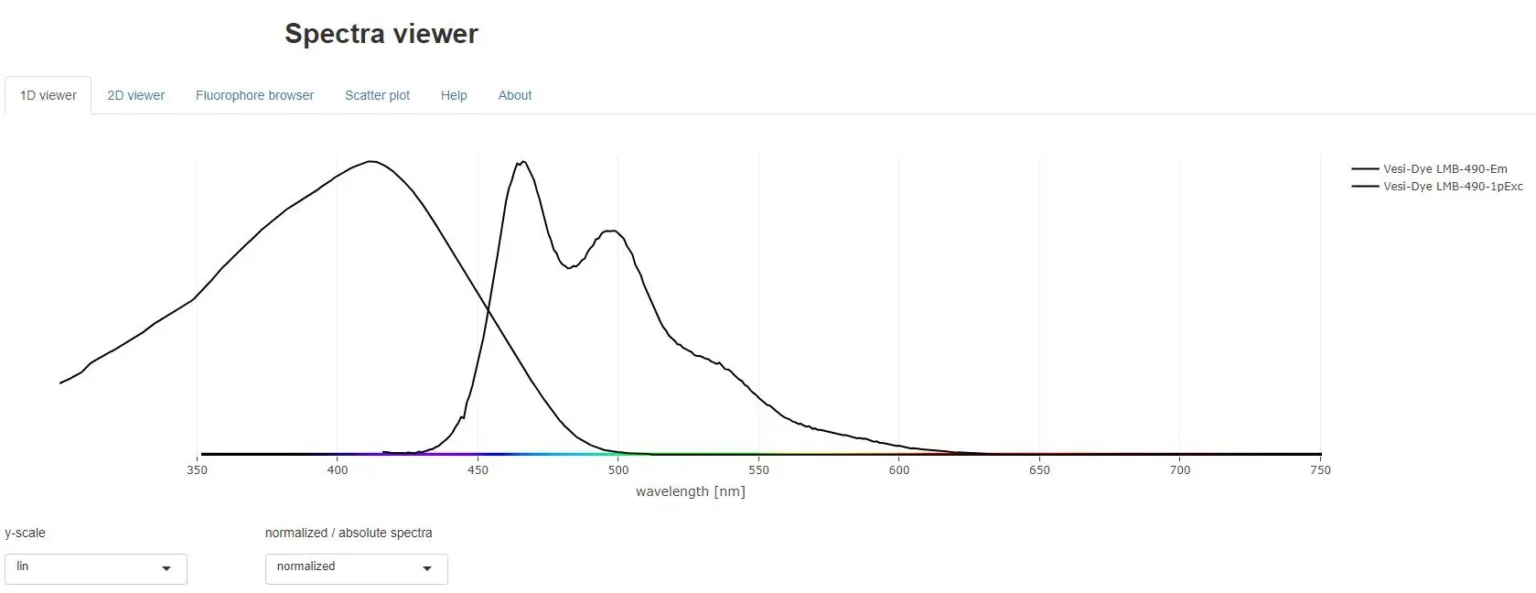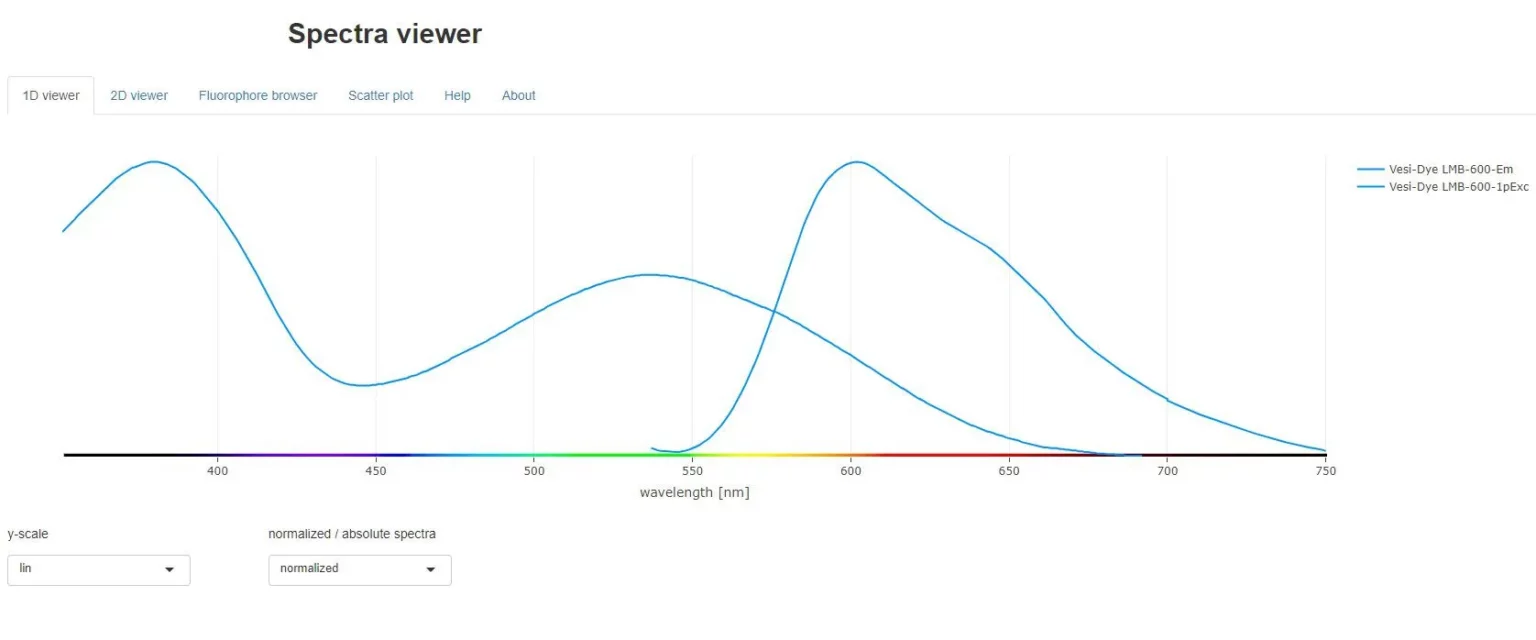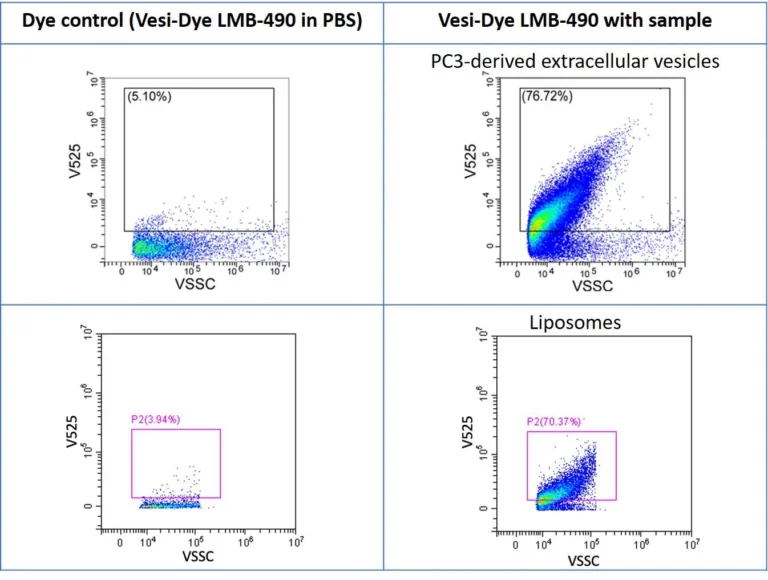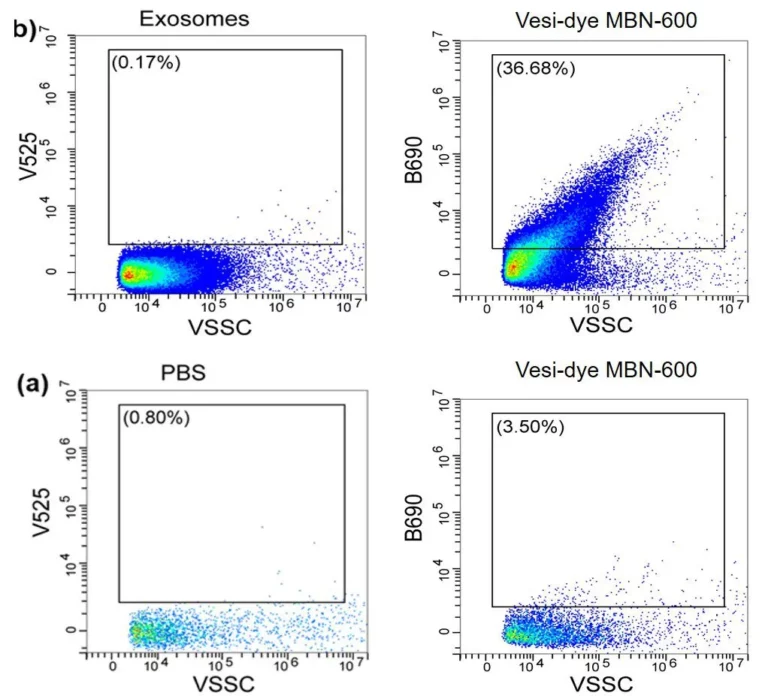
Vesi-Dye LMB
Water-soluble & fluorogenic probes specific to lipid bi-layer membranes
- Home
- Vesi-Dye LMB
The Vesi-Dye LMB family of fluorescent probes brings reliability and predictability to functional bio-nanoparticle analysis. It is compatible with analytics and functional assays
Vesi-Dye LMB-600 | excitation λEX: 488nm / emission λEM: 600nm
Vesi-Dye LMB-490 | excitation λEX: 405nm / emission λEM: 490nm
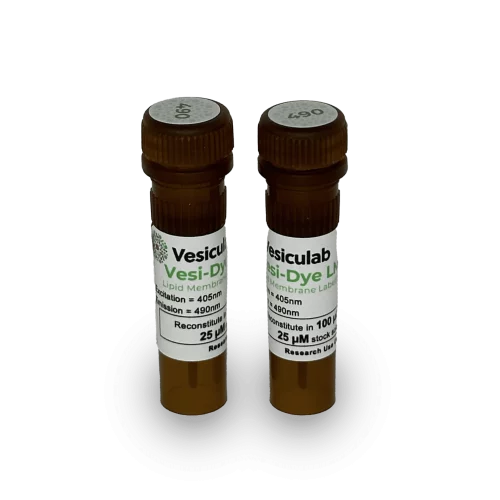
A dye tailored for extracellular vesicles, enveloped viruses and liposomes labelling:
Specificity: labelling only lipidic bi-layers, rather than capsids, protein aggregates and nanobubbles
Compatibility: water-solubility makes Vesi-dye probes easy to dissolve in aqueous media
Reliability: Vesi-Dye LMB doesn’t generate micelles or aggregates during solubilisation and incubation steps
Performance: very bright and stable for 24 hours, Vesi-Dye LMB-labelled samples won’t quench prematurely
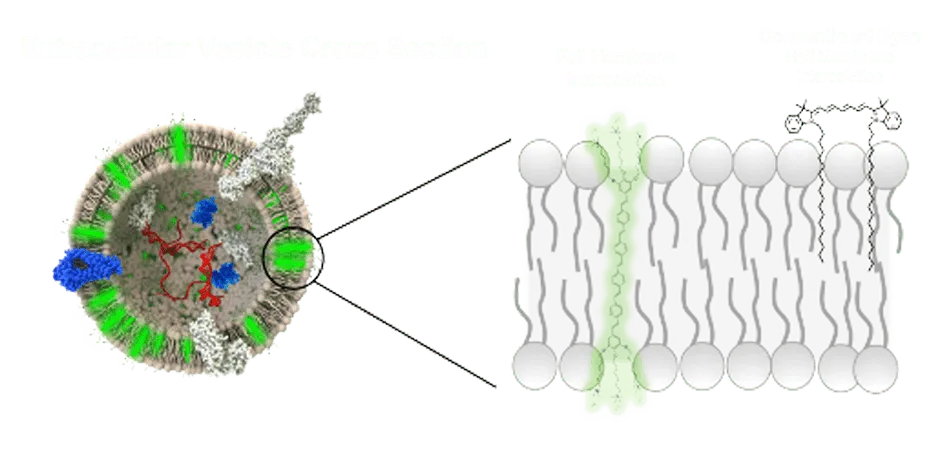
Enabling flow cytometric analysis at the nanoscale
In flow cytometry, measuring nanoparticles by means of scatter detection isn’t always possible as its intensity isn’t strong enough to emerge from the background signal. This has kept entities such as extracellular vesicles, (EVs, exosomes, etc. ), viral vectors for gene therapies (lentiviruses, etc.) and nanoparticles-bases drug carriers (liposomes, LNPs, etc.) out of reach for even the most sensitive flow cytometer. Labelling these entities with lipophilic fluorescent probes has allowed an enhancement of the signal strength by switching from scatter to fluorescent, but the probes themselves were found to be unspecific, poorly soluble in aqueous buffers or producing nano-sized micelles or aggregates.
Vesi-Dye LMB probes further improves on this fluorescence triggering strategy, as it is much easier to disperse in water-based media and doesn’t form nanoscale contaminants such as micelles and aggregates. Being fluorogenic, it also generates low background noise, making the analysis of fainter signal possible on most modern flow cytometers.
Controlling for impurities in F-NTA and F-MRPS
Second-generations nanoparticle tracking analysis (NTA) and microfluidics resistive pulse sensing (MRPS) allow fluorescence detection, which can be used to complement light scatter data to detect non-sample events.
One common occurrence in NTA is the presence of nano-sized bubbles and solid mineral impurities contained in the dilution buffer. These substrates generate events that are included in the final data report, potentially compromising the accuracy and reliability of sample concentration measurement.
Equally in MRPS, pulse sensing detection only cannot ascertain the nature of all particles measured in the size range of interest.
Vesi-Dye LMB can be specifically applied to the extracellular vesicles, lentivirus or liposome sample to reveal the presence of the lipid bi-layer by fluorescence analysis. Under these conditions, only the fluorescence-positives events will be counted for the size and concentration report.

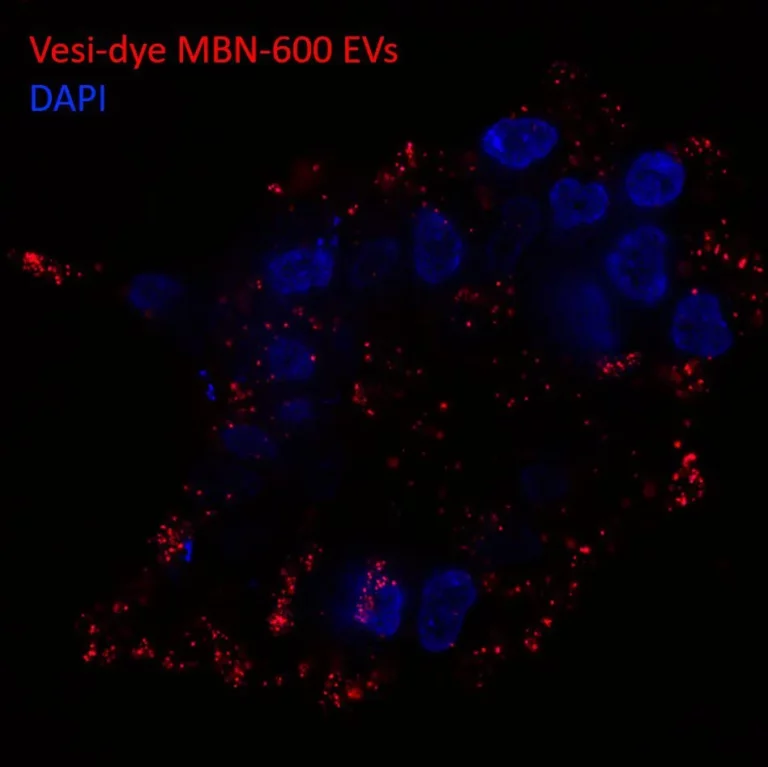
Cell uptake assays
Fluorescence staining/labelling of extracellular vesicles, viruses and other nanoparticles is the most commonly used method to detect and track them during the cellular uptake process.
Various methods utilising the fluorescence emission of the tracer molecule, such as fluorescence spectroscopy, microscopy, and flow cytometry, are employed for analysis. Among these, flow cytometry stands out with its advantages of speed, high sensitivity, and the ability to statistically analyse multiparametric data. Furthermore, it facilitates the simultaneous detection of various cell properties, including cell size, viability, intracellular pH, and membrane potential. Flow cytometry has also been commonly utilised for monitoring endocytosis.
Vesi-Dye LMB probes combine specificity, brightness and long-term stability, essential qualities to perform cell uptake assays. Combined with Vesi-SEC micro clean-up spin columns, it offers a stable, contaminant-free labelled sample that will truly reflect the potential for the studied entities to be taken up by target cells.
Vesi-Dye LMB Technical Description
| Vesi-Dye LMB-490 | Vesi-Dye LMB-600 | |
| Excitation | 405nm | 488nm or 525nm |
| Emission | 490nm | 600nm |
| Soluble | Water Soluble | Water Soluble |
| Stability | 24 hours after incubation | 24 hours after incubation |
| Format | 100 applications | 100 applications |

